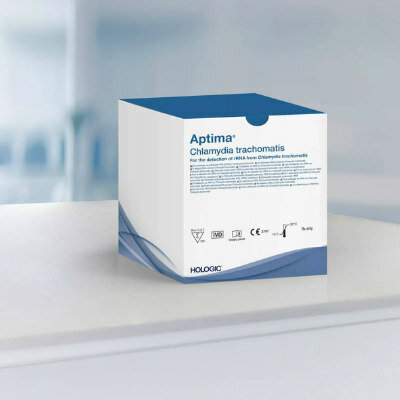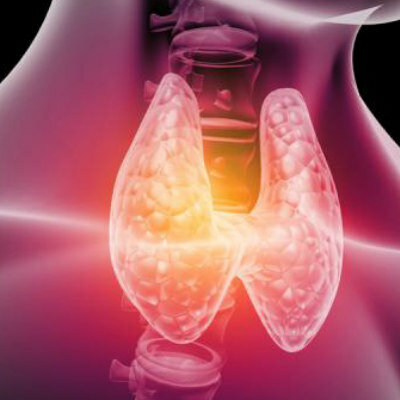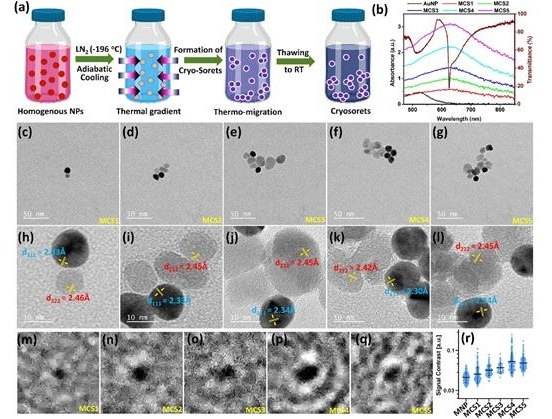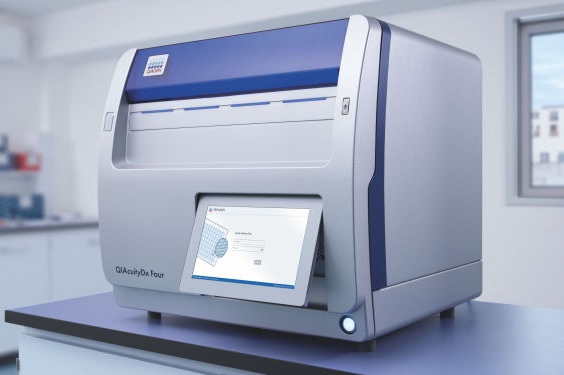Blood Iron Test Predicts Fatal Outcomes
|
By LabMedica International staff writers Posted on 14 Apr 2014 |
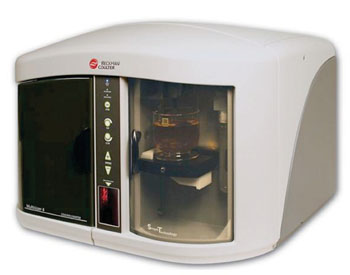
Image: The Coulter Electronic Counter (Photo courtesy of Beckman Coulter).
The transferrin saturation (TSAT) ratio is a commonly used indicator of iron deficiency and iron overload in clinical practice, but precise relationships with total and cardiovascular mortality are equivocal.
The test is a measure of the amount of available iron in the bloodstream with low levels generally reflecting a state of iron deficiency and high levels suggesting a relative excess which can be detrimental to health.
Scientists at the University of Limerick (Ireland) studied 15,823 participants, 20 years of age or older, who had a valid serum creatinine value. Serum creatinine values were used to determine the estimated glomerular filtration rate (eGFR) in mL/min/1.73 m2 for all participants. Blood samples were obtained from nonfasting persons and frozen serum sent for analysis.
Serum iron and total iron binding capacity were measured colorimetrically (Alpkem RFA analyzer; Clackamas, OR, USA), and serum ferritin was measured with the Quantimmune IRMA kit (Bio-Rad Laboratories; Hercules, CA, USA). Hemoglobin was measured using a Coulter S-Plus Jr electronic counter (Coulter Electronics; Hialeah, FL, USA). Serum creatinine concentrations were measured by the modified kinetic Jaffe reaction using a Hitachi 737 analyzer (Boehringer Mannheim Corp.; Indianapolis, IN, USA).
The study found that subjects with extremely low transferrin saturation levels of less that 17.5% were at a 45% higher risk of death. On the other hand, the risk of death was also significantly higher for subjects with very high levels of transferrin saturation above 31.3 %. The mean values for TSAT were 26.3 %; hemoglobin 14.2 g/dL and serum ferritin level 129 ng/mL. The association of TSAT with mortality differed by race and sex. Among whites and blacks, low and high TSAT levels were associated with higher mortality risk while no association was manifest in Mexican-Americans. For men, the impact on mortality was demonstrated only in older males, while for women the j-shaped mortality association was confined to younger females. High levels usually occur in states of iron overload like hemochromatosis, multiple blood transfusions and cirrhosis.
Austin G. Stack MD MSc, a professor and senior author of the study said, “Our analysis suggests that the optimal transferrin saturation range for patient survival should be between 23% to 40% and that careful clinical assessment is warranted for patients with low and high levels in order to identify states of iron deficiency or iron excess. Our study demonstrates that transferrin saturation ratio is a useful prognostic tool in assessing a patient's health and while we support the correction of low transferrin saturation levels in the general population, we would also advise caution against excessive iron loading to levels beyond 40%.” The study was published on March 5, 2014, in the Quarterly Journal of Medicine.
Related Links:
University of Limerick
Alpkem
Bio-Rad
The test is a measure of the amount of available iron in the bloodstream with low levels generally reflecting a state of iron deficiency and high levels suggesting a relative excess which can be detrimental to health.
Scientists at the University of Limerick (Ireland) studied 15,823 participants, 20 years of age or older, who had a valid serum creatinine value. Serum creatinine values were used to determine the estimated glomerular filtration rate (eGFR) in mL/min/1.73 m2 for all participants. Blood samples were obtained from nonfasting persons and frozen serum sent for analysis.
Serum iron and total iron binding capacity were measured colorimetrically (Alpkem RFA analyzer; Clackamas, OR, USA), and serum ferritin was measured with the Quantimmune IRMA kit (Bio-Rad Laboratories; Hercules, CA, USA). Hemoglobin was measured using a Coulter S-Plus Jr electronic counter (Coulter Electronics; Hialeah, FL, USA). Serum creatinine concentrations were measured by the modified kinetic Jaffe reaction using a Hitachi 737 analyzer (Boehringer Mannheim Corp.; Indianapolis, IN, USA).
The study found that subjects with extremely low transferrin saturation levels of less that 17.5% were at a 45% higher risk of death. On the other hand, the risk of death was also significantly higher for subjects with very high levels of transferrin saturation above 31.3 %. The mean values for TSAT were 26.3 %; hemoglobin 14.2 g/dL and serum ferritin level 129 ng/mL. The association of TSAT with mortality differed by race and sex. Among whites and blacks, low and high TSAT levels were associated with higher mortality risk while no association was manifest in Mexican-Americans. For men, the impact on mortality was demonstrated only in older males, while for women the j-shaped mortality association was confined to younger females. High levels usually occur in states of iron overload like hemochromatosis, multiple blood transfusions and cirrhosis.
Austin G. Stack MD MSc, a professor and senior author of the study said, “Our analysis suggests that the optimal transferrin saturation range for patient survival should be between 23% to 40% and that careful clinical assessment is warranted for patients with low and high levels in order to identify states of iron deficiency or iron excess. Our study demonstrates that transferrin saturation ratio is a useful prognostic tool in assessing a patient's health and while we support the correction of low transferrin saturation levels in the general population, we would also advise caution against excessive iron loading to levels beyond 40%.” The study was published on March 5, 2014, in the Quarterly Journal of Medicine.
Related Links:
University of Limerick
Alpkem
Bio-Rad
Latest Clinical Chem. News
- New Clinical Chemistry Analyzer Designed to Meet Growing Demands of Modern Labs

- New Reference Measurement Procedure Standardizes Nucleic Acid Amplification Test Results
- Pen-Like Tool Quickly and Non-Invasively Detects Opioids from Skin
- Simple Urine Test Could Detect Multiple Cancers at Early Stage
- Earwax Test Accurately Detects Parkinson’s by Identifying Odor Molecules
- First-Of-Its-Kind Quantitative Method Assesses Opioid Exposure in Newborns
- Paper-Based Devices Outperform Existing Methods in Diagnosing Asymptomatic Malaria
- Simple Skin Test Could Revolutionize Diagnosis of Pediatric Eosinophilic Esophagitis
- Portable Diagnostic Tool Uses Bioluminescence to Detect Viruses at POC
- AI-Powered Lung Maturity Test Identifies Newborns at Higher Risk of Respiratory Distress
- AI-Powered Blood Test Accurately Detects Ovarian Cancer
- Automated Decentralized cfDNA NGS Assay Identifies Alterations in Advanced Solid Tumors
- Mass Spectrometry Detects Bacteria Without Time-Consuming Isolation and Multiplication
- First Comprehensive Syphilis Test to Definitively Diagnose Active Infection In 10 Minutes
- Mass Spectrometry-Based Monitoring Technique to Predict and Identify Early Myeloma Relapse
- ‘Brilliantly Luminous’ Nanoscale Chemical Tool to Improve Disease Detection
Channels
Molecular Diagnostics
view channel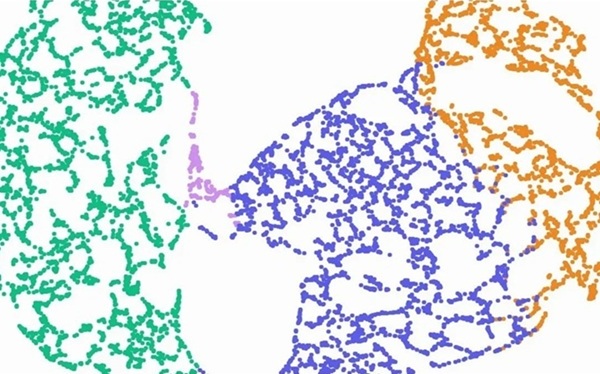
RNA-Seq Based Diagnostic Test Enhances Diagnostic Accuracy of Pediatric Leukemia
A new unique test is set to reshape the way Acute Lymphoblastic Leukemia (BCP-ALL) samples can be analyzed. Qlucore (Lund, Sweden) has launched the first CE-marked RNA-seq based diagnostic test for pediatric... Read more
New Technique for Measuring Acidic Glycan in Blood Simplifies Schizophrenia Diagnosis
Polysialic acid is a unique acidic glycan predominantly found in brain regions associated with memory and emotion, but it is also present in the bloodstream. Research has shown that blood levels of polysialic... Read moreHematology
view channel
Disposable Cartridge-Based Test Delivers Rapid and Accurate CBC Results
Complete Blood Count (CBC) is one of the most commonly ordered lab tests, crucial for diagnosing diseases, monitoring therapies, and conducting routine health screenings. However, more than 90% of physician... Read more
First Point-of-Care Heparin Monitoring Test Provides Results in Under 15 Minutes
Heparin dosing requires careful management to avoid both bleeding and clotting complications. In high-risk situations like extracorporeal membrane oxygenation (ECMO), mortality rates can reach about 50%,... Read moreImmunology
view channel
Blood Test Detects Organ Rejection in Heart Transplant Patients
Following a heart transplant, patients are required to undergo surgical biopsies so that physicians can assess the possibility of organ rejection. Rejection happens when the recipient’s immune system identifies... Read more
Liquid Biopsy Approach to Transform Diagnosis, Monitoring and Treatment of Lung Cancer
Lung cancer continues to be a major contributor to cancer-related deaths globally, with its biological complexity and diverse regulatory processes making diagnosis and treatment particularly difficult.... Read more
Computational Tool Exposes Hidden Cancer DNA Changes Influencing Treatment Resistance
Structural changes in tumor DNA are among the most damaging genetic alterations in cancer, yet they often go undetected, particularly when tissue samples are degraded or of low quality. These hidden genomic... Read moreMicrobiology
view channel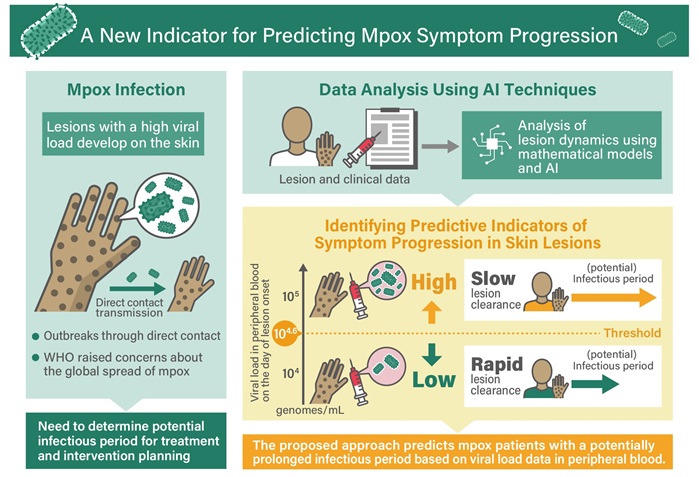
Viral Load Tests Can Help Predict Mpox Severity
Mpox is a viral infection that causes flu-like symptoms and a characteristic rash, which evolves significantly over time and varies between patients. The disease spreads mainly through direct contact with... Read more
Gut Microbiota Analysis Enables Early and Non-Invasive Detection of Gestational Diabetes
Gestational diabetes mellitus is a common metabolic disorder marked by abnormal glucose metabolism during pregnancy, typically emerging in the mid to late stages. It significantly heightens the risk of... Read morePathology
view channelAI Performs Virtual Tissue Staining at Super-Resolution
Conventional histopathology, essential for diagnosing various diseases, typically involves chemically staining tissue samples to reveal cellular structures under a microscope. This process, known as “histochemical... Read moreAI-Driven Preliminary Testing for Pancreatic Cancer Enhances Prognosis
Pancreatic cancer poses a major global health threat due to its high mortality rate, with 467,409 deaths and 510,992 new cases reported worldwide in 2022. Often referred to as the "king" of all cancers,... Read more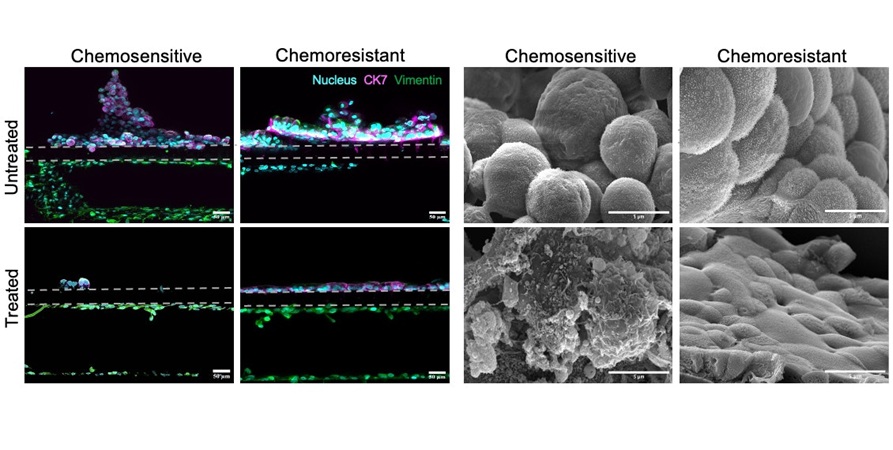
Cancer Chip Accurately Predicts Patient-Specific Chemotherapy Response
Esophageal adenocarcinoma (EAC), one of the two primary types of esophageal cancer, ranks as the sixth leading cause of cancer-related deaths worldwide and currently lacks effective targeted therapies.... Read more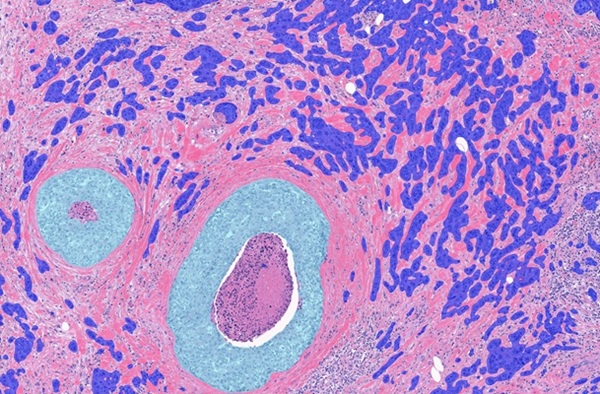
Clinical AI Solution for Automatic Breast Cancer Grading Improves Diagnostic Accuracy
Labs that use traditional image analysis methods often suffer from bottlenecks and delays. By digitizing their pathology practices, labs can streamline their work, allowing them to take on larger caseloads... Read moreTechnology
view channel
Inexpensive DNA Coated Electrode Paves Way for Disposable Diagnostics
Many people around the world still lack access to affordable, easy-to-use diagnostics for diseases like cancer, HIV, and influenza. Conventional sensors, while accurate, often rely on expensive equipment... Read more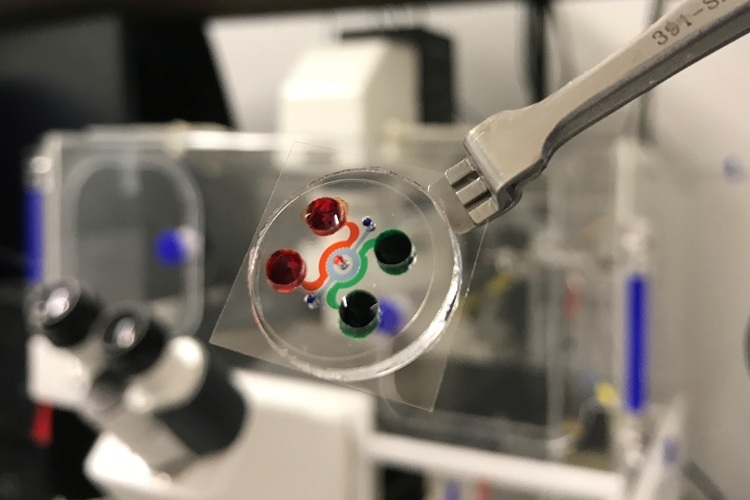
New Miniature Device to Transform Testing of Blood Cancer Treatments
Chimeric antigen receptor (CAR) T cell therapy has emerged as a groundbreaking treatment for blood cancers like leukemia, offering hope to patients when other treatments fail. However, despite its promise,... Read moreIndustry
view channel
Lunit and Microsoft Collaborate to Advance AI-Driven Cancer Diagnosis
Lunit (Seoul, South Korea) and Microsoft (Redmond, WA, USA) have entered into a collaboration to accelerate the delivery of artificial intelligence (AI)-powered healthcare solutions. In conjunction with... Read more







